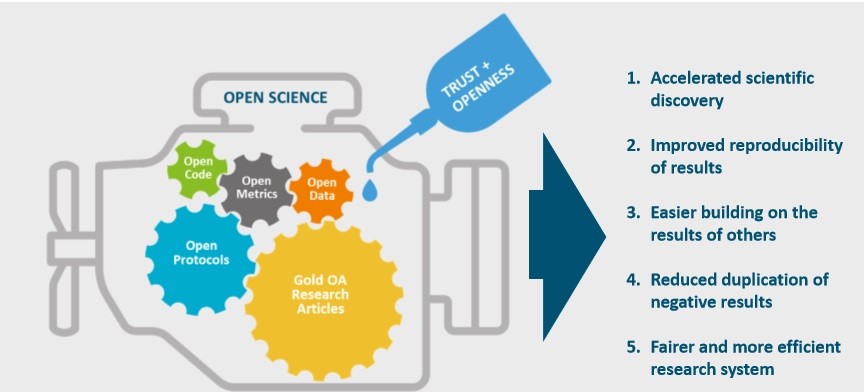Partnerships needed to advance open science
In my at this yearâs Thirteenth I issued a clear, but simple, call to action - if we are to accelerate the transition to open science, which COVID has shown can deliver huge benefits, we, as a research community, need to collaborate more.
Why do we need to accelerate the transition to open science? Because open science is key to advancing scientific discovery and furthering scientific progress. The prize waiting for us is an accelerated and more effective research system, delivering benefits like vaccines and SDG solutions for the whole world.

This is now central to all we do at 50śČťŇ. Our touchstone is: does what we do, what we dedicate our time and resources to, further the advancement of open science? This can be seen in our position as the worldâs , in our dedicated team working to advance delivery of the , and in multiple initiatives to further open up research by championing preprints, open identifiers, curation and deposition of experimental results, open data and associated software code to name just a few.
It is also why the eagle-eyed amongst you will have noticed a change in the strapline for our Springboard blog series which will now focus on sharing thoughts, news and views on all things open science.
The pandemic has demonstrated, acutely and in real time, the benefits of open science and defined a number of characteristics that should form the basis of our actions going forward.
It demonstrated the importance of a speedy review process, one which encompasses both community review via preprints and expedited formal peer review organised by journals. Getting new data out, enabling it to be understood and re-used, and allowing for increased collaboration has proved fundamental in scientists being able to code and understand the virus, and ultimately deliver a vaccine in record time.
Having research freely and immediately available was also exposed as being important. Publishers stepped up very quickly during the pandemic to make relevant content freely accessible and other content more easily accessible off campus. Within weeks, were made freely available which to date have been downloaded almost 150 million times - making a significant contribution to the global knowledge base. It is why we are so adamant that Open Access, which is a fundamental building block of Open Science, must be âgoldâ not âgreenâ. It gives immediate access to the final published version of record, is dynamically updated in perpetuity and can act as an integrated hub for all the elements necessary for open science such as data and code. Therefore it is the only way to achieve real and meaningful open science.
These are just two examples but both of which have the common thread of requiring partnership and collaboration to really make a difference.
At 50śČťŇ we have seen first hand the wider benefits that can be delivered by working with others. For example, partnership and collaboration is delivering increased publishing options to researchers and enabling the transition to OA at scale via Transformative Agreements with the likes of Projekt DEAL and the University of California. It is improving access and discoverability of research through working with organisations such as ResearchGate and being founding members of cross-publisher initiatives like Crossref and GetFTR. It is enhancing understanding of the societal impact of open research by working with data specialists like Digital Science and institutions and consortia such as VSNU and UKB in the Netherlands. And importantly, it is demonstrating the importance of research to making progress on the SDGs. Our partnership with the UN Sustainable Development Solutions Network on a high-level global virtual conference connected almost 1000 researchers, experts working alongside UN officials, government representatives, civil society leaders and policymakers.
Open science also has the potential to reduce inequalities by highlighting discrepancies in diversity and inclusion, while fuelling innovation, job creation and economic growth.
A undertaken for the European Commission estimates the cost of research data not being FAIR (findable, accessible, interoperable, re-usable) could cost up to âŹ26 billion in Europe alone. This is the cost of work that has been duplicated due to a lack of awareness of existing research or negative results. âŹ26 billion is almost double the annual Horizon Europe research budget, over 10 times the annual spend in the EU on combined journal subscriptions and OA APCs and 2.5 times the equivalent spend globally.
Publishers and publishing may therefore be a relatively small cog in terms of global R&D spend but by playing our part in opening up science and in improving the efficiency of the research process and robustness of the research output through greater partnership working, the benefits for the wider community can be so much larger, enabling us to contribute much more than we have in the past.



